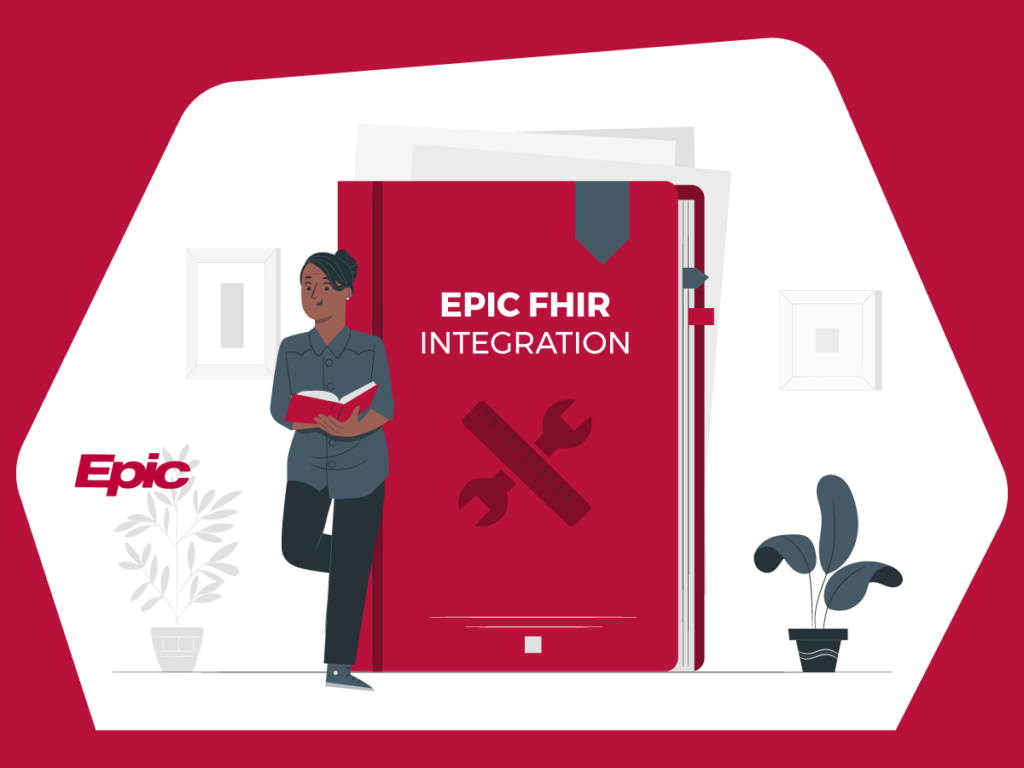
Step-by-Step Guide to Implementing Epic FHIR Integration with Your System
The integration of healthcare data systems has always been a complex process, especially when dealing with large-scale systems like Epic. One of the most important advances in making this integration easier and more efficient is FHIR (Fast Healthcare Interoperability Resources). FHIR is a modern standard for healthcare data exchange that aims to streamline the process and make it easier for systems to communicate seamlessly. In this guide, we will walk through the essential steps to integrate Epic FHIR with your system, focusing on a streamlined approach that can ensure your implementation is successful. We will also introduce Itirra, a leading health tech lab based in Washington State, that has over a decade of expertise in building custom EMR and EHR integration solutions.
What Is Epic FHIR and Why Is It Important?
Epic is one of the largest and most widely used electronic health record (EHR) systems in the world. Its vast network serves healthcare organizations globally, making integration with other systems a key challenge. On the other hand, FHIR is an open standard developed by HL7 for exchanging healthcare information electronically. Unlike older standards like HL7 v2 or CDA, FHIR focuses on modern web technologies such as RESTful APIs, JSON, and XML, making it easier for developers to work with and more adaptable for integration into a wide range of systems.
For healthcare service organizations looking to exchange data across disparate platforms, integrating Epic with FHIR enables efficient data flow, minimizes errors, and reduces administrative burdens. Additionally, by adopting FHIR as the data exchange standard, organizations ensure that they are future-proofing their systems for evolving healthcare IT needs.
Step 1: Understand the Epic FHIR Integration Requirements
Before beginning any Epic FHIR integration project, the first step is to thoroughly understand the requirements of both your system and Epic’s API. Epic provides developers with tools and APIs that allow them to connect third-party applications with its system. However, this integration isn’t automatic and requires understanding how to map Epic’s data fields to the FHIR standard.
The first thing you will need to do is register for access to Epic’s App Orchard, which is their developer portal. This platform provides access to their APIs and documentation, which is critical for implementing the integration. You’ll also need to review the specific FHIR resources that Epic supports, such as Patient, Encounter, and Observation, among others, to ensure that your system can handle the correct data formats.
Step 2: Setting Up the Integration Environment
Once you have access to the Epic API and understand the necessary FHIR resources, the next step is to set up the integration environment. This involves creating a secure connection between Epic’s servers and your system, ensuring that all data exchanges are encrypted and compliant with industry standards such as HIPAA. You will also need to configure your application to handle OAuth 2.0 authentication, as Epic uses this protocol to manage access and permissions.
At this stage, it’s essential to create a robust error-handling strategy, as Epic’s API responses may include various error messages that need to be logged and handled correctly. Furthermore, you should consider testing the integration in a sandbox environment before going live, ensuring all data flows correctly and securely.
Step 3: Data Mapping and Testing
The next step in the integration process is data mapping, which involves ensuring that the data being exchanged between your system and Epic matches the expected FHIR data model. This is often one of the most challenging aspects of integration, as both Epic and your system may use different terminologies, coding systems, or structures for the same data.
Working with healthcare consultants or IT professionals experienced in FHIR like Itirra can help mitigate issues during this stage. It’s essential to thoroughly test each integration point, verifying that data is properly formatted, transmitted, and received. Perform multiple rounds of testing, both with real-world data and with edge cases, to ensure that all scenarios are accounted for.
Itirra: A Partner for Successful Healthcare Integration
When it comes to complex EHR and EMR integration, partnering with a skilled health tech company like Itirra can significantly streamline the process. Based in Washington State, Itirra has been providing bespoke healthcare IT solutions for over a decade. The team specializes in designing, developing, and deploying EMR and EHR integrations for organizations across the healthcare sector, including physician advisors, third-party medical consultants, and revenue cycle management companies.
Itirra’s deep understanding of healthcare workflows and systems makes them an invaluable partner in ensuring that your Epic FHIR integration is both effective and compliant with regulatory standards. They can assist in mapping out the integration strategy, assist with data transformations, and provide expert advice throughout the development and implementation phases.
Maintaining Compliance and Security During Integration
One of the key challenges in integrating healthcare systems is ensuring that the process complies with various regulatory requirements such as HIPAA and HITECH. As you work on your Epic FHIR integration, you will need to ensure that data is handled securely at every stage. This includes using encrypted communication channels, implementing access control policies, and ensuring that only authorized personnel can interact with sensitive data.
Itirra ensures that every project they undertake adheres to the latest security protocols and regulatory requirements, helping healthcare organizations mitigate the risk of breaches or compliance failures. By maintaining these high standards, you can ensure that your integration not only works smoothly but is also compliant with industry laws and standards.
Monitoring and Post-Integration Maintenance
Once your Epic FHIR integration is live, the final step is continuous monitoring and maintenance. Health IT systems are dynamic and often require adjustments as new updates to Epic or FHIR standards are released. Regular audits of your integration will help identify any issues early on and ensure that everything continues to function smoothly.
At this stage, Itirra can provide ongoing support, ensuring that your integration remains up to date with the latest security patches, data formats, and regulatory guidelines. Monitoring the integration over time will also help you identify any performance bottlenecks or areas where the system can be optimized.
Conclusion
Integrating Epic FHIR into your system may seem like a daunting task, but with careful planning and execution, it can significantly enhance your ability to exchange healthcare data efficiently. By following the steps outlined in this guide—understanding Epic’s requirements, setting up your environment, and conducting thorough testing—you can ensure a successful implementation. Partnering with a trusted health tech lab like Itirra can further streamline the process, offering you expert advice, development support, and ongoing maintenance to ensure the integration remains secure and effective.


